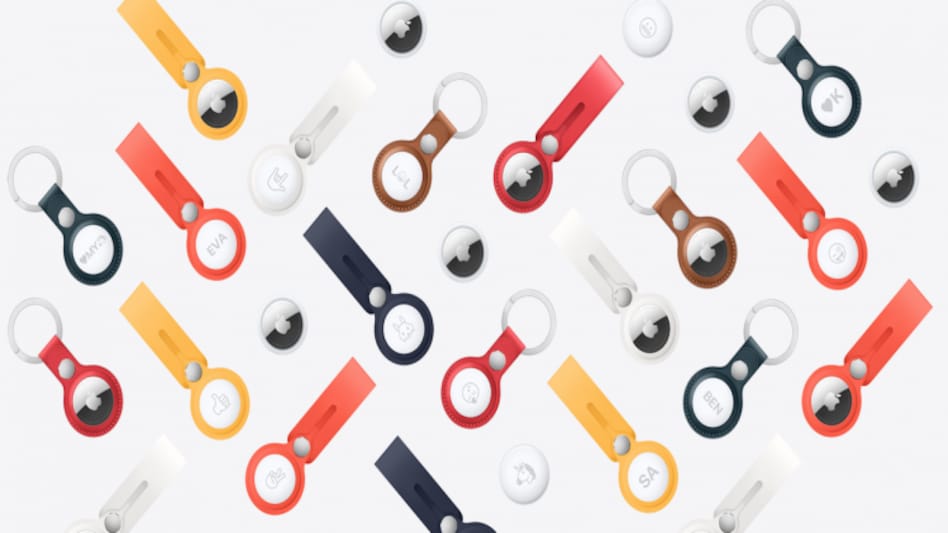 Primarily a Bluetooth tracker, it is Apple’s precision finding that makes it worth considering
Primarily a Bluetooth tracker, it is Apple’s precision finding that makes it worth considering  Primarily a Bluetooth tracker, it is Apple’s precision finding that makes it worth considering
Primarily a Bluetooth tracker, it is Apple’s precision finding that makes it worth considering Be it our keys, wallet, or luggage, we all hate losing our stuff. Thankfully some Bluetooth trackers come to the rescue. Joining this category is Apple with its AirTag. Primarily a Bluetooth tracker, it is Apple’s precision finding that makes it worth considering. And just like other Apple accessories, even the AirTag works with the Apple ecosystem (iPhone, iPod running OS 14.5 or iPad on iPadOS 14.5) only.
Design
AirTag is a compact circular-shaped tracker measuring 1.26 x 1.26 x 0.31 inches. The stainless steel tracker has a white cover on one side, which one can opt for engraving 3 letters on. Weighing 11 grams, it’s easy to add it to a keychain, camera, backpack or can easily slide into a wallet or purse. This is a no-hassle tracker as the battery could last a year, which can be replaced at home.
Pairing
Just like the AirPods Pro, pairing AirTag was a breeze. To start using the AirTag, I had to pull out the cover to activate the tag. iPhone identified the AirTag when held closer and prompted to connect. Once connected, iPhone suggested adding the name of the item, the tag it will be attached to. Name can be selected from the drop-down list or a custom name can be added. Once configured, the AirTag is registered with the respective Apple account.
Precision Finding
The idea of having an AirTag is to attach it to the possessions and forget about losing them. And if in case not able to locate them, the Find My app comes to the rescue as it shows Tag’s exact location on the map. But only if it is in the range, which is about 10 meters. The Find (nearby) option within the app displays the exact distance and direction to look for. To test the accuracy, I asked my niece to hide my car keys (with AirTag attached). As it was within the range, the app showed me the direction and distance (8.5 meters) to start the search. Once I reached near the device, I tapped on the ‘play sound’ option and the Tag started beeping. Using this precision finding feature, I was able to find the keys in just 30 seconds. But if the tag is not in the range, the ‘Lost Mode’ comes in handy. Lost mode helps locate the AirTag with the help of other users on the ‘Find My’ network. This uses other Apple devices to listen to the pings from the AirTag and relay it to the owner about the location, without compromising privacy. When the ‘lost mode’ is turned on from the app, Apple prompts to enter the mobile number where I can be reached, and receive a notification when updated location information becomes available.
If you wish there was a feature where a notification popped on the iPhone reminding of leaving the tag behind, Apple is adding ‘Separation Alerts’ in iOS 15 to let the user know when the Tag is left behind. Apple is also working on an Android version to identify a lost AirTag and will be launched later this year. Moreover, the AirTag is locked to the Apple account it is configured with and can be removed only from the Find My app on the same device. No one else will be able to use the preconfigured AirTag. Given the precision tracking the AirTag offers, the tracker can be misused - say for stalking. I could not test this feature as I am staying indoors and not stepping out of the house due to the COVID-19 pandemic.
Priced at Rs 3,590 for a single AirTag, and Rs 10,900 for a pack of four, you might have to invest in the keyring or silicone loop if you plan to attach the AirTag to keys, camera or a handbag. But if you plan to only throw it in the bag, wallet or luggage, you can continue to use it without investing in any additional accessories. You can even add an AirTag to your pet.
Also Read: TCS to hire 40,000 freshers from campuses in current fiscal
Also Read: India's gold imports leap in June on easing COVID-19 restrictions
Also Read: Forex reserves rise to lifetime high of $610.01 billion
For Unparalleled coverage of India's Businesses and Economy – Subscribe to Business Today Magazine
Copyright©2025 Living Media India Limited. For reprint rights: Syndications Today